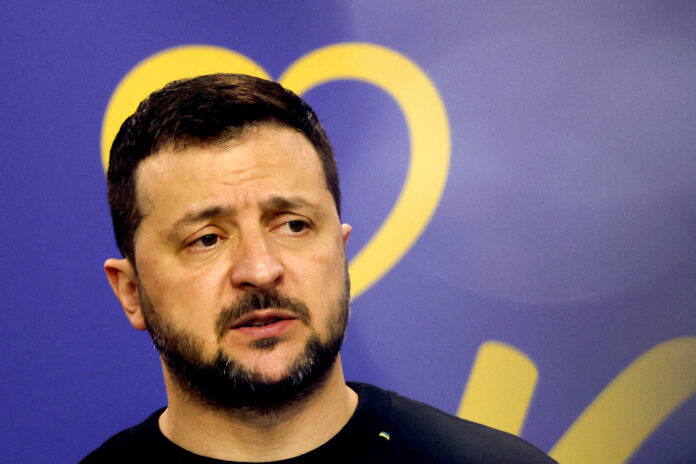When Russian President Vladimir Putin addressed the Russian people during his annual speech to the nation last February, his war in Ukraine was losing steam. Three months before his speech, Russian forces withdrew from the Ukrainian city of Kherson, despite Putin declaring the region (along with Donetsk, Luhansk, and Zaporizhzhia) part of the Russian Federation. In September 2022, the Russian army was caught unprepared, undermanned, and under-equipped as Ukrainian forces pressed a blitzkrieg-like counteroffensive in the Kharkiv region. Putin didn’t mince words, calling the war a “difficult, watershed period for our country.”
That was then. This is now.
Putin stepped into the cavernous auditorium this week to address his people again, in a better, but still not great, position.
This year’s speech showcased vintage Putin and contained everything that the most bullish Kremlin propagandist could hope for. The entire event was long-winded, boring, and full of the usual unsubstantiated claims about Ukraine being run by a Nazi cabal. At one point, Putin rattled his nuclear saber yet again, warning the United States and its NATO allies that they shouldn’t dare to get more deeply involved in the war on Ukraine’s behalf, unless it wanted to raise the probability of a Russian nuclear escalation.
Russia’s opponents, he said, “must … realize that we too have weapons that can hit targets on their territory”—weapons that could blow up the Earth a few times over. This threat was no doubt a response to French President Emmanuel Macron’s suggestion days earlier that the West must keep every option on the table to defeat Russian forces in Ukraine, even if it included deploying European troops on Ukrainian soil.
ADNAN BECI/AFP via Getty Images
Putin has good reason to be more confident, at least at this stage in the war. The Ukrainian army isn’t about to fold and the frontlines aren’t about to buckle, but there’s no denying that Russia now holds the momentum on the battlefield. Less than two weeks ago, the Russians captured the eastern Ukrainian town of Avdiivka after a four-month onslaught of glide bombs, artillery, and human-wave attacks that resulted in tens of thousands of Russian casualties. The Ukrainians didn’t have the ammunition necessary to keep defending the town and chose to cut their losses, withdrawing to new defensive positions. Since then, the Russian army has claimed three more villages, albeit small ones, and is preparing for a deeper thrust westward. The ultimate aim: to capture the entire Donbas region.
These slow, grinding Russian advances are coming at a time when the Ukraine aid debate on Capitol Hill remains stalled. The Biden administration’s $106 billion national security supplemental request, more than half of which was designated for Ukraine, has been dead ever since House Republicans insisted on tying its passage to stronger immigration restrictions. When a bipartisan group of senators did exactly that after months of negotiations, Senate Republican leadership killed the effort after former president and presumptive 2024 GOP presidential nominee Donald Trump criticized the compromise as far too lax on the southern border. The Senate passed an alternative $96 billion national security supplemental this month without the immigration piece, but Speaker Mike Johnson has yet to put it up for a vote.
Without further action by Congress, there is only so much the White House can do to salvage the situation. The legislative branch, after all, is responsible for appropriations. All the White House can do is spend and direct the money, something that isn’t possible if the money isn’t there to begin with. With respect to Ukraine, there actually is another $4 billion available. But the Defense Department is concerned about using it to send additional ammunition, missiles, and air defense interceptors to the Ukrainians if it can’t replace the supplies in the U.S. inventory. Even so, the Biden administration is now open to the idea; Pentagon officials met this Tuesday to discuss reinforcing Ukraine with more military gear, even if U.S. stocks will have to suffer the shortfall in the immediate future. Without a new pot of money, the administration is left scrambling for whatever dollar they can find under the couch cushions.
Taken together, the situation looks quite dire for Ukrainian President Volodymyr Zelensky, who despite retaining widespread support in Western capitals is beginning to see his own popularity, trustworthiness, and job approval ratings decline as the war drags on with no end in sight. According to a Feb. 5-10 poll by the Kyiv International Institute of Sociology, trust in Zelensky is now at 64 percent, still high compared to other leaders around the world but 26 percentage points below its May 2022 peak.
His decision to fire Ukraine’s top military commander, General Valery Zaluzhny, after failing to break Russia’s defensive lines during Kyiv’s months-long counteroffensive last year likely didn’t do him any favors—Zaluzhny remains the most trusted, popular figure in Ukraine today. Zelensky will have even more difficult decisions ahead of him as time goes by and as Russia continues its own offensive. The most difficult: whether to institute a national mobilization in order to draft another 500,000 men into the Ukrainian army’s ranks, something Zaluzhny recommended but Zelensky deferred due to the economic and political ramifications associated with such a move.
Ukraine’s war is now in its third year. And it could be the toughest yet.
Daniel R. DePetris is a fellow at Defense Priorities and a syndicated foreign affairs columnist at the Chicago Tribune.
The views expressed in this article are the writer’s own.
Uncommon Knowledge
Newsweek is committed to challenging conventional wisdom and finding connections in the search for common ground.
Newsweek is committed to challenging conventional wisdom and finding connections in the search for common ground.


